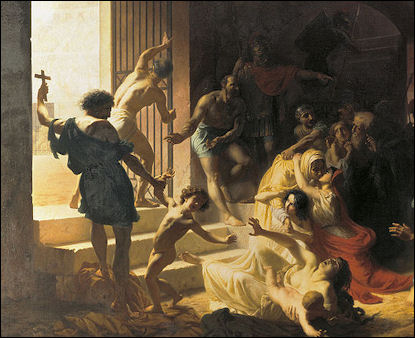303
The long Diocletianic persecution of Christianity begins
By the late 3rd century the Roman empire was in dreadful shape, besieged by barbarian invaders, rent by rival generals claiming the throne, the economy eroded by inflation, crushing taxation and a flight from the cities. The rot was halted by Diocletian, a general from the Balkans who took over in 284 and instituted a series of reforms that saved the empire. He divided the empire into four parts, arranged for an ordered succession, instituted price controls and renewed the army. A key part of his plan was to elevate the status of the emperor, to make him a semi-divine figure beyond criticism. Christianity thus presented a problem as its adherents offered to pray for the emperor but refused to worship him.
In 303 Diocletian decreed an empire-wide drive to flush out Christian supporters and make them conform or suffer. All citizens were required to attend an official ceremony in which they would be told to perform some anti-Christian act such as burning the scriptures or defacing a picture of Christ. Many complied, some fled into the wilderness but many resisted and were martyred. The succession of Constantine and his Edict of Milan of 313 would offer toleration to Christians and began the process of making it the empire’s dominant religion.
